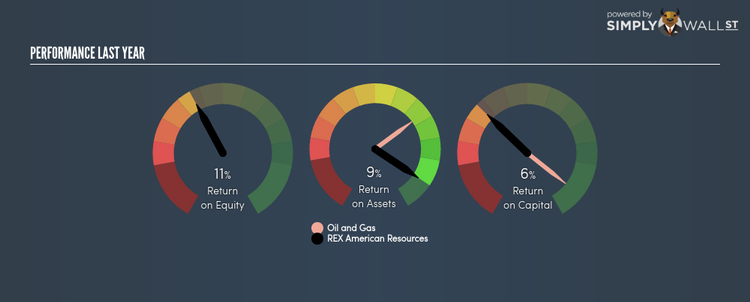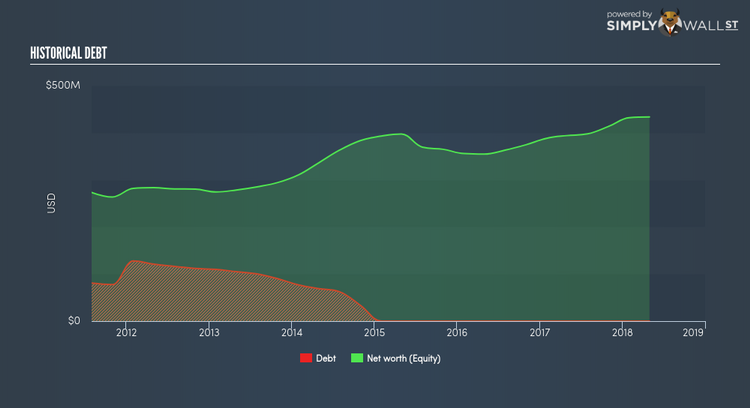Did REX American Resources Corporation (NYSE:REX) Create Value For Shareholders?

REX American Resources Corporation (NYSE:REX) delivered an ROE of 11.46% over the past 12 months, which is an impressive feat relative to its industry average of 11.31% during the same period. While the impressive ratio tells us that REX has made significant profits from little equity capital, ROE doesn’t tell us if REX has borrowed debt to make this happen. We’ll take a closer look today at factors like financial leverage to determine whether REX’s ROE is actually sustainable. See our latest analysis for REX American Resources
What you must know about ROE
Return on Equity (ROE) is a measure of REX American Resources’s profit relative to its shareholders’ equity. An ROE of 11.46% implies $0.11 returned on every $1 invested. In most cases, a higher ROE is preferred; however, there are many other factors we must consider prior to making any investment decisions.
Return on Equity = Net Profit ÷ Shareholders Equity
Returns are usually compared to costs to measure the efficiency of capital. REX American Resources’s cost of equity is 8.76%. Since REX American Resources’s return covers its cost in excess of 2.69%, its use of equity capital is efficient and likely to be sustainable. Simply put, REX American Resources pays less for its capital than what it generates in return. ROE can be split up into three useful ratios: net profit margin, asset turnover, and financial leverage. This is called the Dupont Formula:
Dupont Formula
ROE = profit margin × asset turnover × financial leverage
ROE = (annual net profit ÷ sales) × (sales ÷ assets) × (assets ÷ shareholders’ equity)
ROE = annual net profit ÷ shareholders’ equity
The first component is profit margin, which measures how much of sales is retained after the company pays for all its expenses. Asset turnover reveals how much revenue can be generated from REX American Resources’s asset base. Finally, financial leverage will be our main focus today. It shows how much of assets are funded by equity and can show how sustainable the company’s capital structure is. Since ROE can be artificially increased through excessive borrowing, we should check REX American Resources’s historic debt-to-equity ratio. Currently, REX American Resources has no debt which means its returns are driven purely by equity capital. Therefore, the level of financial leverage has no impact on ROE, and the ratio is a representative measure of the efficiency of all its capital employed firm-wide.
Next Steps:
ROE is a simple yet informative ratio, illustrating the various components that each measure the quality of the overall stock. REX American Resources’s above-industry ROE is encouraging, and is also in excess of its cost of equity. Its high ROE is not likely to be driven by high debt. Therefore, investors may have more confidence in the sustainability of this level of returns going forward. Although ROE can be a useful metric, it is only a small part of diligent research.
For REX American Resources, I’ve compiled three fundamental factors you should look at:
Financial Health: Does it have a healthy balance sheet? Take a look at our free balance sheet analysis with six simple checks on key factors like leverage and risk.
Future Earnings: How does REX American Resources’s growth rate compare to its peers and the wider market? Dig deeper into the analyst consensus number for the upcoming years by interacting with our free analyst growth expectation chart.
Other High-Growth Alternatives : Are there other high-growth stocks you could be holding instead of REX American Resources? Explore our interactive list of stocks with large growth potential to get an idea of what else is out there you may be missing!
To help readers see pass the short term volatility of the financial market, we aim to bring you a long-term focused research analysis purely driven by fundamental data. Note that our analysis does not factor in the latest price sensitive company announcements.
The author is an independent contributor and at the time of publication had no position in the stocks mentioned.


